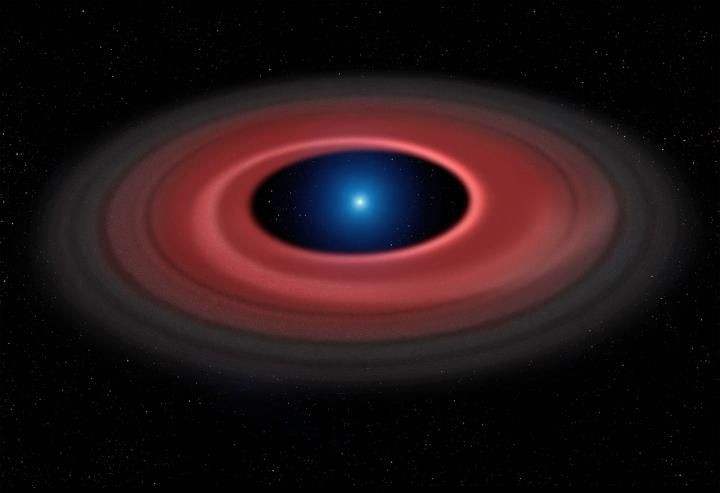November Astronomy Findings: Unprecedented Image Of Asteroid Ripped Apart By Dead Star Captured

Researchers have captured for the first time an image of an asteroid being ripped apart by a dead star and forming a glowing debris ring, according to a University of Warwick study. The image shows gas made by collisions among the debris particles within the ring is illuminated by the ultraviolet rays of the star, which in turn produce a dark red glow.
Led by Christopher Manser of the University of Warwick's Astrophysics Group in the U.K., the research team looked at the remnants of planetary systems around white dwarf stars. Researchers found while the process parallels the one that led to the formation of Saturn's rings, the white dwarf and its debris are several times larger.
"The diameter of the gap inside of the debris ring is 700,000 kilometers [almost 435,000 miles], approximately half the size of the Sun and the same space could fit both Saturn and its rings, which are only around 270,000 km [167,770 miles] across," Manser said. "At the same time, the white dwarf is seven times smaller than Saturn but weighs 2,500 times more."
Manser, a graduate student, and his team were able to come to these findings employing data collected by the European Southern Observatory's Very Large Telescope, which transmits large amounts of information at a high rate. Several instruments, including an Ultraviolet and Visual Echelle Spectrograph and X-shooter, were used to obtain the detailed images.
Researchers obtained the data over 12 years, from 2003 to 2015. A technique called Doppler tomography, similar to the technology used for medical tomographic scans, was employed in their work. "The image we get from the processed data shows us these systems are truly disk-like, and reveals many structures that we cannot detect in a single snapshot," Manser said in a statement.
However, it is not common for orbiting disks of gaseous material to surround these white dwarf stars. Only seven instances are on record, according to researchers. The study concludes an asteroid had "strayed dangerously close to the dead star and had been ripped apart by the immense tidal forces it experienced to form the disk of material that is now visible."
According to Boris Gansicke, a co-author of the study, "When we discovered this debris disk orbiting the white dwarf back in 2006, we could not have imagined the exquisite details that are now visible in this image, constructed from 12 years of data -- it was definitely worth the wait."
© Copyright IBTimes 2025. All rights reserved.






















